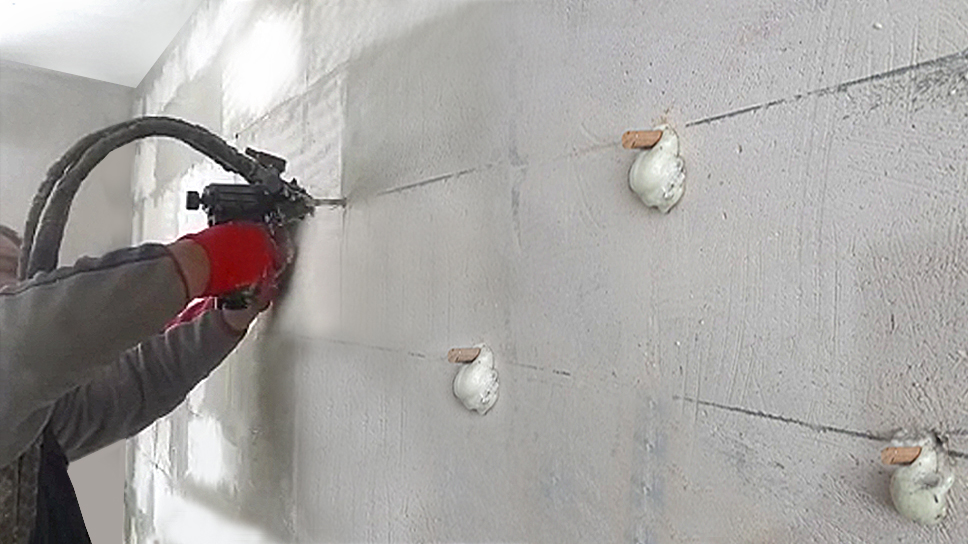Insulation of three-layer walls
In the 70s and 80s of the 20th century there were many houses built of hollow bricks, solid bricks or trusses, from which layer walls were constructed. These walls were unique due to the presence of an air gap of several centimetres, which had a negative impact on their insulation value. The heat transfer coefficient U in three-layer walls was extremely high - in some locations it could even reach 1.3 W/(m2K), which had a noticeable impact on the comfort of living. The rooms had to be re-heated more and more, which resulted in higher bills.
One way to improve the insulation performance of a house is to fill the sandwich walls, i.e. to seal the air space. There are several effective thermal insulation materials available on the market, but not all of them can be used in all residential buildings. What is the best method for insulating three-layer walls?
What is PUR foam insulation in sandwich walls about?
Insulation of three-layer walls may be carried out with any thermal insulation method with application of various insulation materials. One of them involves PURIOS polyurethane systems injected evenly into the gap in order to equalise the insulation level. This process should be started 20 cm from the bottom of the wall, drilling four holes for each square metre of surface in the external (less frequently - internal) part of the wall. Make sure that the holes are placed correctly and form even-armed triangles.
Filling three-layer walls with foam consists in injecting it with a gun equipped with an appropriate tip. Polyurethane foam is initially liquidand moves downwards to fill the space. The process should start from the lowest points, going upwards. A moment after application, the foam starts to swell and causes subsequent fragments of the material to move, filling the void tightly.
Insulation of three-layer walls with PUR foam should be carried out by a qualified worker who knows how much material should be introduced into the openings. As soon as the job is completed, the worker checks whether the process was successful by making inspection holes in the façade. The filling of the sandwich walls should be visible after drilling the hole, which is masked with adhesive mortar as part of the final step.
Advantages of filling three-layer walls with PUR foam
Knowing the course of the cavity filling process, it is even better to get acquainted with its effects and positive consequences. What are the advantages of insulating three-layer walls with foam? They certainly involve versatility of application. In case of many buildings, the foamed polystyrene or mineral wool on the façade cannot be used. Such exceptions include buildings considered to be historical monuments where the art restorer has not given his consent for external insulation, or when only one flat in a block of flats needs to be insulated, or when neighbours do not give their consent. In such cases, insulating three-layer walls with PUR foam is the only solution.
Filling the layered walls with closed-cell foam guarantees optimum results. The thermo-insulating material has excellent insulating properties. The heat transfer coefficient can be up to 0.020 W/(mK), which makes the foam the most effective solution available on the market.
What are the other advantages of closed-cell foaminsulation of three-layer walls ? These include slow expansion of the foam and low pressure on the walls, which does not cause dangerously high pressure. Using the wrong type of foam can cause it to deform, which poses a threat to the structure. Insulation of three-layerwalls with closed-cell foam is a kind of reinforcement. It bonds perfectly with the wall and forms an additional layer consolidating it.

 This website uses cookies. By using this website, you consent to the use of cookies in accordance with your browser settings.
This website uses cookies. By using this website, you consent to the use of cookies in accordance with your browser settings.